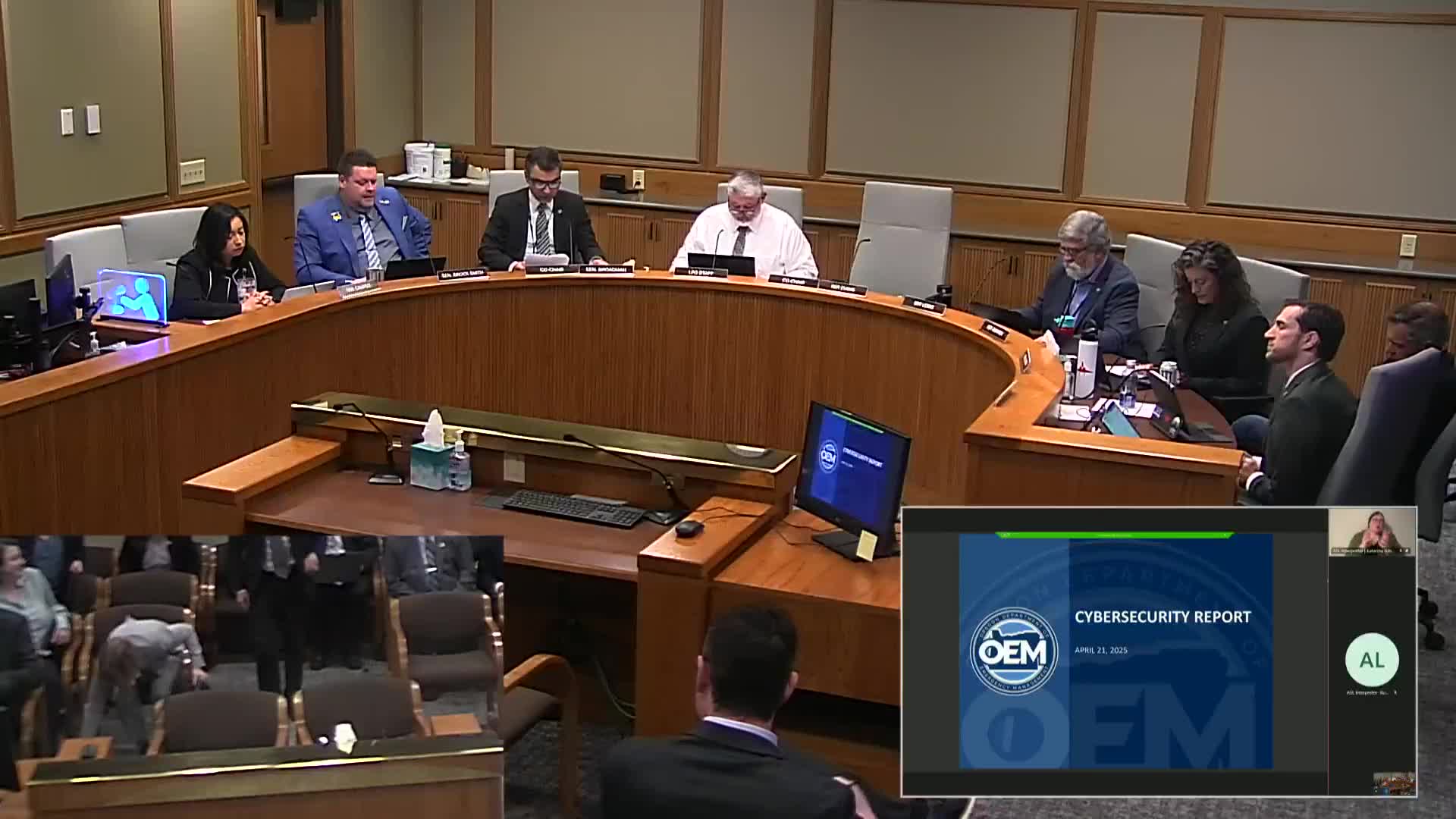OEM outlines statewide cybersecurity grant roles; FEMA approvals and cost‑share questions delay some allocations
April 21, 2025 | Public Safety, Ways and Means, Joint, Committees, Legislative, Oregon
This article was created by AI summarizing key points discussed. AI makes mistakes, so for full details and context, please refer to the video of the full meeting. Please report any errors so we can fix them. Report an error »

The Public Safety Subcommittee acknowledged the Oregon Department of Emergency Management report on statewide cybersecurity coordination on April 21, 2025.
The report, prepared in collaboration with the Department of Administrative Services Enterprise Information Services (DAS EIS), the Higher Education Coordinating Commission’s Cybersecurity Center of Excellence, and the Department of Justice, responded to a budget note in Senate Bill 5701 asking agencies to clarify roles, responsibilities and how grant funding is coordinated to maximize mitigation, preparedness, response and recovery.
Why it matters: State and local cybersecurity coordination determines how federal and state grant funds are allocated, which projects receive approval, and which agencies lead technical and response functions during incidents.
Key points presented by OEM and the grant coordinator Kevin Jeffries:
• OEM manages federal funding from DHS/FEMA and CISA for state and local cyber grants; DAS EIS (the state chief information security officer) chairs the state and local cybersecurity grant program planning committee and leads policy coordination.
• FY2022: just under $3,000,000 received and fully allocated; the state obtained a cost‑share waiver for that year.
• FY2023: a larger award was received; roughly half of FY2023 funds have been allocated to projects, and remaining allocations await FEMA approval of selected projects.
• FY2024: allocations have not begun because of uncertainty about the cost‑share waiver; OEM will not allocate until waiver status is confirmed in writing.
• Administrative rules for federal grants allow the state to retain up to 5% for management and up to 15% for state projects (20% total) under the program, per testimony.
OEM also summarized how agencies coordinate during an active cyber response: ESF‑17 (cybersecurity) is led operationally by DAS EIS with OEM serving as the coordination authority within the Emergency Coordination Center and recovery phase.
Committee action: DAS CFO and LFO recommended acknowledging receipt of OEM’s report. Representative Lewis moved to approve the LFO recommendation; the motion passed and will be carried to the full committee.
The report, prepared in collaboration with the Department of Administrative Services Enterprise Information Services (DAS EIS), the Higher Education Coordinating Commission’s Cybersecurity Center of Excellence, and the Department of Justice, responded to a budget note in Senate Bill 5701 asking agencies to clarify roles, responsibilities and how grant funding is coordinated to maximize mitigation, preparedness, response and recovery.
Why it matters: State and local cybersecurity coordination determines how federal and state grant funds are allocated, which projects receive approval, and which agencies lead technical and response functions during incidents.
Key points presented by OEM and the grant coordinator Kevin Jeffries:
• OEM manages federal funding from DHS/FEMA and CISA for state and local cyber grants; DAS EIS (the state chief information security officer) chairs the state and local cybersecurity grant program planning committee and leads policy coordination.
• FY2022: just under $3,000,000 received and fully allocated; the state obtained a cost‑share waiver for that year.
• FY2023: a larger award was received; roughly half of FY2023 funds have been allocated to projects, and remaining allocations await FEMA approval of selected projects.
• FY2024: allocations have not begun because of uncertainty about the cost‑share waiver; OEM will not allocate until waiver status is confirmed in writing.
• Administrative rules for federal grants allow the state to retain up to 5% for management and up to 15% for state projects (20% total) under the program, per testimony.
OEM also summarized how agencies coordinate during an active cyber response: ESF‑17 (cybersecurity) is led operationally by DAS EIS with OEM serving as the coordination authority within the Emergency Coordination Center and recovery phase.
Committee action: DAS CFO and LFO recommended acknowledging receipt of OEM’s report. Representative Lewis moved to approve the LFO recommendation; the motion passed and will be carried to the full committee.
View full meeting
This article is based on a recent meeting—watch the full video and explore the complete transcript for deeper insights into the discussion.
View full meeting
